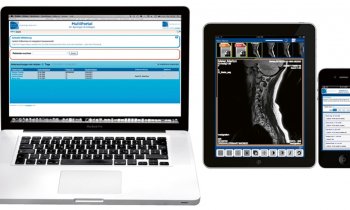Between innovation and investment
Many radiologists are fascinated by the exciting new developments in medical technology but they find themselves faced with difficult or even irresolvable problems when trying to purchase this equipment.

Whereas in the past the innovation cycles in technology roughly corresponded with the depreciation periods for large-scale medical equipment, new technologies have been coming onto the market since the turn of the millennium with ever shorter gaps. At the same time, pressure from competition and costs has intensified so that a nightmarish dilemma has developed.
Before a new diagnosis or treatment procedure is covered by medical insurers there has to be proof that the new method will be significantly superior to conventional methods. With diagnostic procedures this is particularly difficult to achieve, because the target is defined as longer survival or better quality of life for patients. Multicentre studies, with large numbers of patients, can hardly be carried out when propaganda for new and better technology is already occurring while the study is still ongoing. This is the reason why some studies have significant methodological shortcomings and become obsolete even before the results are published. And what can really be defined as the state of technology when several generations of the same technology are being used simultaneously - such as the incremental one-slice CT along with 64-slice dual source CT?
The required minimum standards in most countries orient themselves around the existing levels of technological installations and therefore investments in the most up-to-date technology are not necessarily reimbursed.
However, despite this situation, there are still a number of good reasons for radiologists and hospitals to invest in new technologies. It is not without reason that radiological technology is considered the epitome of effective medicine and it therefore delivers significant advantages over the competition. More and more patients inform themselves about the equipment and results offered and delivered by individual doctors or hospitals via the internet – in the USA this is already done by over a third of the population.
Whereas in diseases that take a longer course, the direct influence of diagnostics on the prognosis is hard to define that there are already clear results in some other areas. The records of the German Society for Trauma Surgery confirm a significantly improved survival rate for polytraumatised patients whose primary diagnosis was carried out using multi-slice CT.
It is no less attractive for patients and referring doctors when invasive, stressful examinations can be replaced by non-invasive, gentle procedures and a series of different, individual examinations can be replaced by a single, comprehensive procedure. Some examples are the MRCP instead of the ERCP, CT and MR angiography instead of catheter angiography and - now a realistic option – the MSCT instead of a heart catheter. MSCT and MRI have evolved into modalities that enable an examination of the entire body during one examination procedure. Diseases that potentially manifest themselves generally, or in multiple locations, can be comprehensively clarified in one course of examination – without a loss in image quality or diagnostic precision. Whole body MRI or CT has already proved itself in the staging and follow-up for patients with malignant tumours or for the diagnosis of vascular stenosis and obstruction in arteriosclerosis.
Improved diagnostic precision of large, modern medical equipment also has a significant economic factor in a hospital. It contributes to a faster and more precise diagnosis for patients. Treatment can be started earlier and hospital stays can be shortened – an economic advantage that must not be underestimated. If effective radiology leads to a reduction in in-patient stays by even only 0.1 days - an extremely conservative estimate from my point of view - this leads to a saving of €225,000 in every 45,000 cases treated.
The savings in radiology itself are also not to be underestimated. There is a lasting, positive effect on radiologists, radiographers and the internal organisation (registration, administration) and workflow in the hospital improves.
Performant radiology information (RIS) and picdure archiving and communication systems (PACS) that are integrated into a comprehensive hospital information system (HIS) are of high importance. Voice detection systems for radiology dictation have also proved highly effective and substantially shorten the time it takes for radiological information to become available to the referring doctors.
As difficult and painful the split between innovation and investment for radiologists and those funding the hospitals may be – there is no alternative to thoughtful and long-term innovation politics.
01.05.2006










